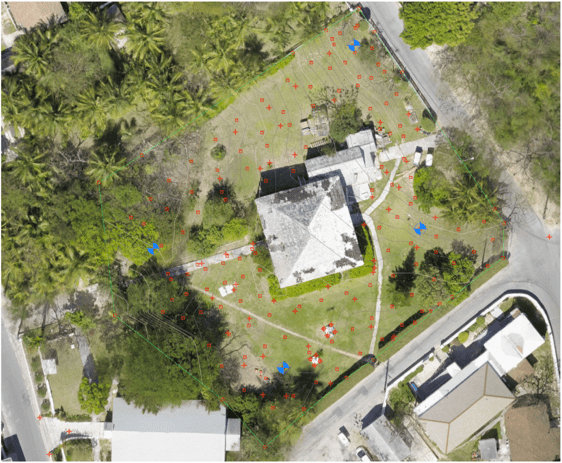
“Some of the greatest assets our country holds are our heritage sites and historical buildings and it is up to this generation to take a keen interest in preserving what we have.” This according to Dr. Christopher Curry, Chair of Social Sciences, at the signing of a memorandum of understanding (MOU) between the University of The Bahamas (UB) and University of Miami’s School of Architecture. According to Curry, historic Nassau dates to 1695, making it one of the oldest cities in the Atlantic world, with numerous buildings in need of historic preservation and restoration (pictured here, the Public Library building in downtown Nassau, New Providence).

The MOU covers potential collaborative efforts between the universities for Architecture and Urban Design, Urban and Rural Planning, Regional Heritage Preservation, Sustainable Design, and Coastal Resilience, as well as the built environment.
“We have a longstanding history with the University of Miami and this really is a mechanism to reignite those efforts,” recalled Provost Dr. Linda Davis. “This comes at a strategic time for us at UB because we have recently approved our full baccalaureate programme in Architecture and so students now have the opportunity to complete a full four-year degree here at UB. We think that experiential and field studies are key and we are creating more and more opportunities for our students to engage those kinds of experiences across programmes and so in large measure the opportunity that presents itself through our involvement with The Residency project in Harbour Island, and others projects with our relationship with Dr. Keith Tinker, Director, Antiquities, Monuments, Museum Corporation (AMMC).”


In partnership with AMMC, a team of undergraduate and graduate architecture students and faculty from the UM’s School of Architecture, and a team from IDSC Software Engineering, went to Dunmore Town, Harbour Island in the Spring of 2016. Assigned to work on the decaying Commissioner’s Residence (aka “The Residency”), the group was charged with evaluating its historical significance, potential restoration, and future preservation. (Top photo below is a point cloud)


The IDSC team used drone technology to capture aerial pictures of the residency as well as mapping, graphing, and drafting drawings for future restoration. This project is one of several ongoing research and preservation initiatives undertaken by AMMC on Harbour Island.


Dr. Rodolphe el-Khoury, Dean & Professor of Architecture and Urbanism, University of Miami is pleased with the collaboration with UB. “This is a natural alliance and that we both will benefit greatly from it. This is our first step as we explore various possibilities and more venues for collaboration in the areas of cultural heritage, urbanism, and architecture. We share the same issues with sea level rise and coastal erosion, we have to work together to find solutions and we must start now.” Additionally, UB and UM will engage in discussions to explore initiatives focused on collaborative international design studios, joint research projects, exchanges of scientific and academic materials, and publications as well as joint conferences with visiting professors and scholars.

“We recognize the significance of our University and the role it has to play in literally leading in almost every area in the advancement of education and the academic fields. We are more than pleased to be part of this initiative going forward,” says Tinker. “Part of our mandate is historic preservation, and that includes the protection of the built environment. We feel that this is a job that will be shared with UB, and its up-and-coming School of Architecture.”
Through the MOU with UM, students at UB are now able to take advantage of exchange opportunities on the Family Islands and in the United States. “This collaboration is an important part of our Bachelors programme moving forward; this will also benefit our study abroad programme. We are so pleased that our students now have the opportunity help shape our country sustainably through the built environment and learn the importance of preserving our heritage. This truly is an exciting experience for our students to be part of,” explained UB Valaria Pintard-Flax, Assistant Professor of Architecture, UB.
Next fall, UB will open the doors of the G.T.R. Campbell Small Island Sustainability Research Complex, a multifunctional and multidisplinary centre (UPDATE: now open, pictured below). Designed and built in accordance with LEED specifications, the building will provide state of the art learning spaces for research, academic programmes in sustainable agriculture, food, health and the environment.

Additionally, Nassau was recently designated as a UNESCO Creative City, and, therefore, able to participate in collaborative projects with other countries in order to build sustainable, inclusive, and balanced economic, cultural, and environmental development.
SOURCE: “Preservation of Bahamian History—UB Signs MOU with University of Miami’s School of Architecture” in The Bahamas Weekly (Nassau, BAHAMAS) August 1, 2017.
http://www.thebahamasweekly.com/publish/bis-news-updates/Preservation_of_Bahamian_History_UB_Signs_MOU_with_University_of_Miami_s_School_of_Architecture_printer.shtml









